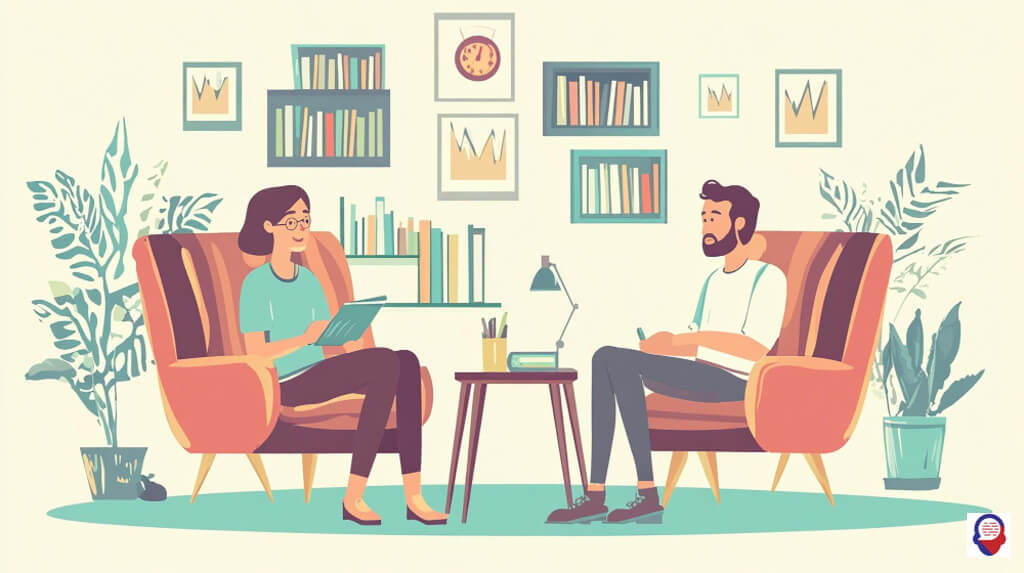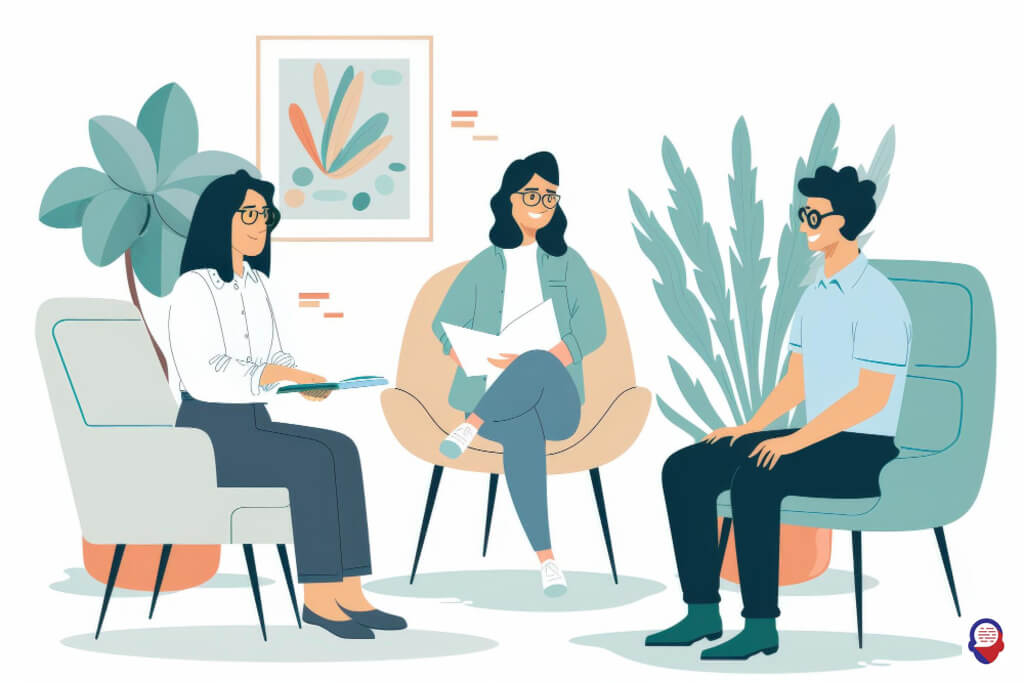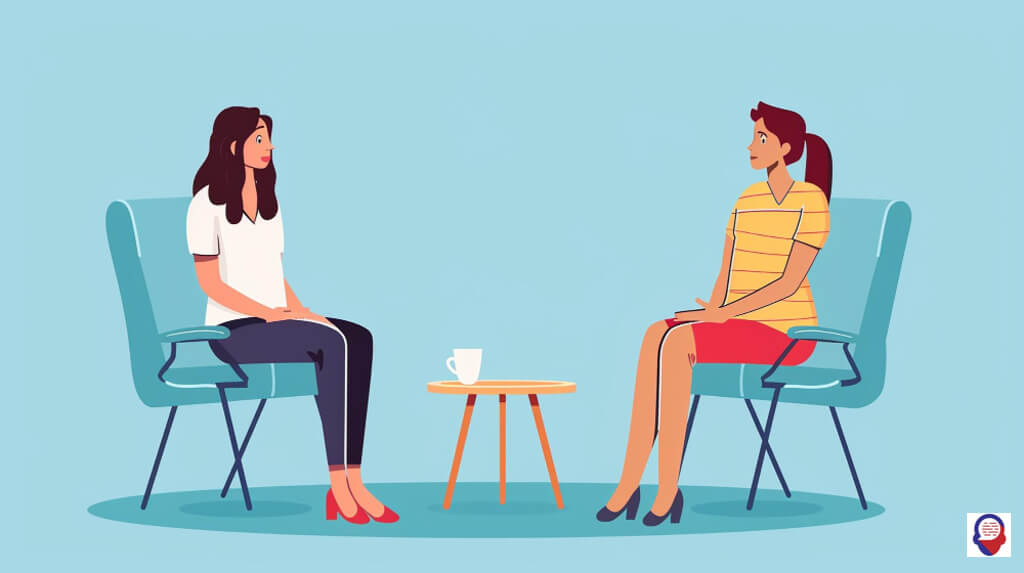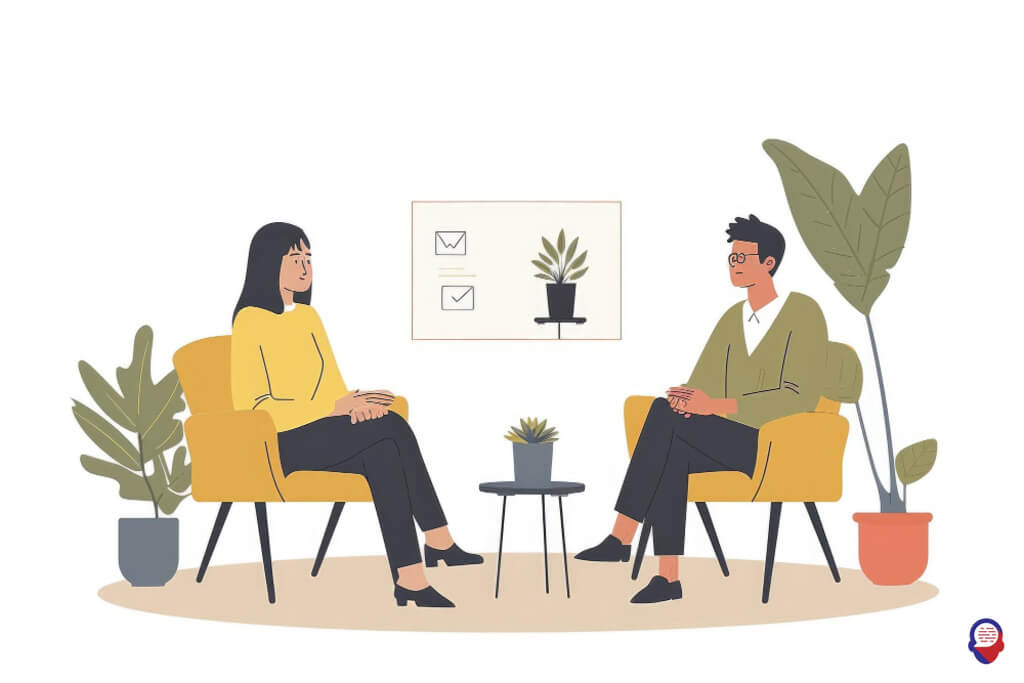Rebuilding Your Family: A Guide to Addiction Therapy
When one person in a family struggles with drug addiction, the entire family system feels the tremors. It’s a silent earthquake that cracks foundations, shatters trust, and leaves everyone feeling isolated in the wreckage. The focus so often lands squarely on the individual using substances, their treatment, their recovery. But what about the parents, the partners, the siblings, the children, who are also caught in the storm? True, lasting recovery is rarely a solo journey, it is a collective effort, a rebuilding of a home that has been weathered by chaos. This is where family therapy emerges, not as a peripheral add-on, but as a central, powerful catalyst for healing everyone involved.
This is not about placing blame or pointing fingers. It is about understanding that addiction is a family disease, and healing, therefore, must be a family affair. It’s about untangling the complex knots of codependency, miscommunication, and pain that have grown around the addiction. It is about giving every member of the family a voice, a set of tools, and a pathway back to connection. This guide will walk you through the world of family therapy for drug addiction, illuminating what it is, why it is so profoundly effective, and how it can help your family find its way back to solid ground.

What Exactly Is Family Therapy for Addiction?
Family therapy for addiction is a form of psychotherapy that treats the family unit as a whole, rather than focusing solely on the individual with the substance use disorder. It operates on the principle that family dynamics play a significant role in both the development and the recovery from addiction.
Instead of viewing the person with the addiction as the "problem," this therapeutic approach sees the addiction as a symptom of a larger, systemic issue within the family. The therapist works with family members together to identify unhealthy patterns of communication, behaviour, and belief. The goal is to transform the family from a system that may have unintentionally enabled the addiction into a powerful, unified support network for recovery.

Why Is Involving the Family So Crucial for Recovery?
Involving the family is crucial because family dynamics can either unintentionally enable addictive behaviours or become the strongest foundation for lasting recovery. The home environment is the most influential factor in a person’s life, and addressing its dysfunctions is essential for preventing relapse and fostering genuine change.
When a family learns to heal together, they create a safe, supportive, and understanding space for the recovering individual to return to. This collective effort dismantles the triggers and stresses that often fuel substance use. It replaces chaos with structure, blame with empathy, and isolation with connection, dramatically increasing the chances of long-term sobriety.

How Does Addiction Affect the Entire Family Unit?
Addiction systematically disrupts a family’s emotional stability, communication, roles, and financial security, creating a pervasive system of dysfunction and distress. It’s like a corrosive agent that slowly eats away at the bonds holding a family together, leaving everyone feeling its effects in profound and personal ways.
The constant stress, fear, and uncertainty trigger a cascade of negative emotions, from anger and resentment to guilt and deep-seated anxiety. Trust, the bedrock of any healthy relationship, erodes with every broken promise and hidden secret. Communication breaks down into a cycle of arguments, accusations, or a painful, heavy silence, as family members become afraid to say the wrong thing.
To cope with the chaos, family members often unconsciously adopt specific survival roles. One person might become the "enabler," constantly making excuses or covering for the individual, while another becomes the "hero," trying to prove the family is okay through overachievement. A "scapegoat" may act out and draw negative attention away from the addiction, while a "lost child" withdraws into their own world to escape the turmoil. These roles, while born from a need to survive, ultimately perpetuate the dysfunctional system and prevent the core problem from being addressed.

What Is Codependency and How Is It Addressed?
Codependency is a dysfunctional relationship pattern where a family member’s sense of self-worth and identity becomes excessively reliant on meeting the needs of the person with the addiction. This often leads them to neglect their own well-being while unintentionally enabling the addictive behaviour they are trying to stop.
A person struggling with codependency may find themselves constantly rescuing their loved one from consequences, making excuses for their behaviour, or putting the other person’s needs far ahead of their own. Their emotional state becomes a mirror of the person with the addiction, they are happy when the other is sober, and devastated or anxious when they are using. It is a painful cycle of control, sacrifice, and deep-seated fear of abandonment.
In therapy, codependency is addressed by first helping the individual recognize these patterns without shame or judgment. The therapist provides education on what healthy support looks like versus enabling. Through guided exercises and conversation, the family member learns to establish firm, healthy boundaries, rediscover their own identity and interests, and detach their emotional well-being from their loved one’s choices. This process empowers them to support recovery in a constructive way, rather than perpetuating the cycle of addiction.

Can Family Support Really Improve Treatment Outcomes?
Yes, an overwhelming body of research confirms that active, healthy family support significantly improves treatment outcomes and is one of the strongest predictors of long-term sobriety. When the family is engaged in the recovery process, the individual no longer feels like they are fighting the battle alone.
This supportive environment provides a powerful source of motivation and accountability. Knowing that your family is educated about addiction and is actively working on their own healing creates a powerful incentive to stay on track. Furthermore, a transformed family dynamic removes many of the environmental triggers, like conflict or enabling, that can lead to relapse.
Ultimately, a healthy family provides a safe harbour, a place of acceptance and encouragement to return to after treatment. This sense of belonging and unconditional, yet boundaried, love is a critical protective factor against the loneliness and stress that often accompany early recovery. It rebuilds the very foundation upon which a new, sober life can be built.

What Happens During a Family Therapy Session?
A typical family therapy session involves a trained therapist guiding a structured conversation between family members to identify, understand, and change the unhealthy interaction patterns that contribute to addiction. The therapist acts as a neutral facilitator, ensuring that the discussion remains productive and that everyone has a chance to be heard.
The session is a confidential and safe space designed to break destructive communication cycles. Instead of blame and anger, the focus is on expressing feelings and needs constructively. The therapist might introduce specific communication techniques, help the family set ground rules for interaction, and provide education about the nature of addiction as a disease. The ultimate objective is to move from conflict to collaboration, working together to solve problems and support recovery.

Who Should Attend the Therapy Sessions?
Ideally, anyone who lives in the home or is significantly involved in the life of the person with the addiction should attend the sessions. This includes parents, spouses or partners, siblings, and sometimes even adult children or grandparents who play a central role in the family system.
The definition of "family" is flexible and determined by the unique situation. It can include close friends, roommates, or other members of a "chosen family" who form the core support network. The therapist will work with the family to decide who should be present for each session, as this may change depending on the topics being discussed. The key is to include those whose interactions have a direct impact on the home environment and the recovery process.

What Are the Key Goals of These Sessions?
The primary goals of family therapy sessions are to educate the family about addiction, fundamentally improve communication, establish and maintain healthy boundaries, and develop a unified, collaborative plan for supporting long-term recovery. These goals work together to transform the family environment from one of chaos to one of healing.
Education is the first step, it involves helping everyone understand addiction as a chronic brain disease, not a moral failing or a lack of willpower. This knowledge reduces blame and stigma, fostering a more compassionate and effective approach. Improving communication involves teaching skills like active listening and using "I" statements to express feelings without attacking others, breaking the cycle of arguments and resentment.
Establishing boundaries is critical, it teaches family members how to protect their own well-being and stop enabling destructive behaviours. This is not about punishment, but about creating clear, respectful limits. Finally, all of these elements come together as the family learns to solve problems collaboratively, creating a relapse prevention plan and a shared vision for a healthier future.

Is It Safe to Express My Feelings?
Absolutely, one of the therapist’s most important roles is to create and maintain a safe, neutral, and confidential environment where every family member can express their true feelings without fear of judgment, interruption, or retaliation. This safety is the foundation upon which all progress is built.
The therapist acts as a guide and a referee, ensuring that conversations remain respectful and productive. They will often establish ground rules at the beginning of therapy, such as "no yelling," "no interrupting," and "speak for yourself." This structure helps to contain the intense emotions that often surface.
For many families, this may be the first time they have ever been able to talk openly about the pain, anger, and fear caused by addiction. The therapist’s presence ensures that these difficult conversations lead to understanding and healing, rather than escalating into the same old destructive fights. It is a space designed for vulnerability to lead to strength.

What Are the Different Types of Family Therapy for Addiction?
Several evidence-based family therapy models exist, each offering a unique framework and set of techniques, but all share the core principle of leveraging family strengths to support recovery. The choice of model often depends on the specific needs of the family, the age of the person with the addiction, and the therapist’s training.
These are not one-size-fits-all approaches, they are specialized toolkits designed to address different aspects of family dysfunction. Some focus on changing the family’s structure and rules, while others concentrate on improving emotional regulation and communication. A skilled therapist will often integrate elements from various models to create a customized treatment plan that best fits your family’s circumstances.

What Is Structural Family Therapy (SFT)?
Structural Family Therapy is an approach that focuses on understanding and reorganizing the family’s underlying structure, which includes its unspoken rules, hierarchies, and boundaries. The therapist observes how family members interact to identify dysfunctional patterns or coalitions, such as a parent and child siding against the other parent.
The core idea of SFT is that a family’s problems are maintained by its flawed structure. For instance, if boundaries are too weak (enmeshment), family members are overly involved in each other’s lives, stifling autonomy. If boundaries are too rigid (disengagement), family members are isolated and lack emotional support. The therapist actively works to "restructure" these dynamics by challenging the old rules and helping the family establish clearer boundaries and a more balanced hierarchy, creating a healthier system that naturally supports recovery.

How Does Bowenian Family Therapy Work?
Bowenian Family Therapy helps individuals achieve a greater level of "differentiation of self," which is the ability to separate one’s own thoughts and feelings from the family’s powerful emotional system. This approach views the family as an emotional unit where anxiety is contagious, and family members often react to each other on an emotional, automatic level rather than a rational one.
A key concept is "triangulation," where two people in conflict pull in a third person to diffuse the tension, which prevents the original issue from being resolved. Bowenian therapy helps family members recognize these patterns in their own lives. By learning to be less emotionally reactive and more self-defined, individuals can change their own behaviour, which in turn disrupts the dysfunctional family dance and reduces overall anxiety within the system, making it a calmer and more stable environment for recovery.

Can You Explain Brief Strategic Family Therapy (BSFT)?
Brief Strategic Family Therapy is a practical, short-term approach that zeroes in on identifying and changing specific, negative interaction patterns within the family that are directly linked to the substance use. It is less concerned with the deep history of the problem and more focused on finding what is not working in the here and now, and then actively intervening to change it.
A BSFT therapist will observe the family’s communication and problem-solving styles to pinpoint the exact sequences of behaviour that perpetuate the issue. The therapy is "strategic" because the therapist devises specific plans and gives directives or "homework" assignments for the family to practice new ways of interacting between sessions. The goal is to rapidly replace dysfunctional patterns with healthier, more effective ones, making it a very goal-oriented and efficient form of treatment, often completed in 12 to 16 sessions.

What Is Multidimensional Family Therapy (MDFT)?
Multidimensional Family Therapy is a highly comprehensive and integrated treatment model, most commonly used for adolescents and young adults with substance use and behavioural problems. It is "multidimensional" because it recognizes that a young person’s problems are influenced by multiple factors, so it works simultaneously with the individual, the family, and their broader community network.
An MDFT therapist doesn’t just work with the family in an office, they engage with all the key systems in the adolescent’s life. This includes individual sessions with the teen to build motivation and skills, family sessions to improve relationships and parenting practices, and collaboration with outside systems like the school, the juvenile justice system, or influential peer groups. By intervening across all of these domains, MDFT creates a powerful, unified web of support around the young person, addressing the root causes of addiction from every angle.

How Can a Family Prepare for Therapy?
A family can prepare for therapy by first collectively agreeing to commit to the process with an open mind, managing their expectations for a quick fix, and making a conscious decision to be as honest and vulnerable as possible. Preparation is less about planning what to say and more about cultivating the right mindset.
It is helpful to discuss as a family what you hope to achieve, while also understanding that therapy is a process of discovery that can take unexpected turns. Acknowledge that it will likely be difficult and uncomfortable at times, but reaffirm your shared goal of healing. The most important preparation is simply the willingness to show up, participate, and trust that change is possible, even if you cannot yet see the path forward.

How Do We Find the Right Therapist?
You find the right therapist by looking for a licensed mental health professional who has specific training and experience in both family systems and substance use disorders. Check for credentials such as a Licensed Marriage and Family Therapist (LMFT), and do not hesitate to ask potential therapists directly about their background in treating addiction within a family context.
Beyond credentials, the "fit" between your family and the therapist is paramount. Most therapists offer a brief initial consultation, use this opportunity to gauge whether you feel comfortable, heard, and respected. A good therapist should be able to explain their approach clearly and inspire confidence without making unrealistic promises. Trust your intuition, as the therapeutic relationship itself is a key ingredient for success.

What If My Loved One Refuses to Go?
You can and should still begin therapy even if your loved one with the addiction refuses to attend. Family therapy is not solely dependent on the presence of the identified patient, because changing any part of the family system will inevitably affect the entire system.
By attending therapy, the willing family members can learn about addiction, codependency, and enabling. You can develop stronger coping skills, learn to set healthy boundaries, and improve your own mental and emotional well-being. This shift in your behaviour and reactions can fundamentally change the family dynamic, often creating an environment where the person with the addiction feels more motivated to seek help themselves. Your healing is not held hostage by their choices.

What Mindset Should We Adopt?
The most effective mindset to adopt is one of collaboration over blame, curiosity over judgment, and hope over despair. View therapy not as a trial to determine who is at fault, but as a workshop where your family will learn new skills together.
Commit to focusing on solutions for the future rather than dwelling on the hurts of the past. Be patient with yourself, your family members, and the process itself, as meaningful change takes time. Above all, hold onto hope. Entering family therapy is a courageous and loving act, a testament to your belief that your family is worth fighting for and that a healthier, more connected future is possible.
Frequently Asked Questions

How long does family therapy for addiction usually last? The duration of family therapy varies widely depending on the family’s specific needs, the severity of the addiction, and the therapeutic model being used. Brief, strategic models may last for 12 to 16 weeks, while more in-depth approaches addressing long-standing issues might continue for six months to a year or more. The therapist will work with you to establish clear goals and a general timeline.

Is family therapy covered by insurance? In many cases, yes, family therapy is considered a valid and evidence-based form of mental health treatment and is often covered by insurance plans. It is crucial to contact your insurance provider directly to understand the specifics of your coverage, including any requirements for pre-authorization, co-pays, and the number of sessions covered.

What if we have young children in the family? Therapists who specialize in family systems are skilled at adapting their approach to include or support members of all ages. Sometimes, young children may participate in parts of sessions, perhaps through play therapy, to help them express their feelings. More often, the therapist will provide the parents with direct guidance on how to talk to their children about addiction in an age-appropriate way and how to support their emotional needs outside of the therapy room.

Can this therapy make things worse before they get better? It is possible for things to feel more difficult initially. The process of unearthing long-buried feelings of anger, hurt, and resentment can be painful and emotionally turbulent. However, this is a normal and often necessary part of the healing process. A skilled therapist will guide your family through this difficult phase, ensuring that these raw emotions are processed constructively, leading to genuine resolution rather than more conflict.
Addiction can make a family feel broken, isolated, and lost in the dark. But healing is possible, and it often begins by taking the first, courageous step toward understanding and connection.
At Counselling-uk, we provide a safe, confidential, and professional place to help you and your family navigate this challenge. We believe in rebuilding relationships and fostering the strength that lies within your family unit. If you are ready to find a path forward together, reach out to our compassionate team. We are here to offer support for all of life’s challenges, and you do not have to face this one alone.





Therefore, there’s a trained therapist who will guide the family through this difficult journey. They’ll provide direction and feedback while helping all parties involved find new ways of understanding each other and supporting one another. This includes helping both those affected by addiction as well as their loved ones learn how to cope with difficult emotions such as shame, guilt and anger without turning back to substances or other maladaptive behaviors.
• Education about addiction: The therapist will talk about the physical, psychological, and social impacts of addiction so that everyone in the family can better understand why treatment is necessary for recovery from substance abuse disorders.